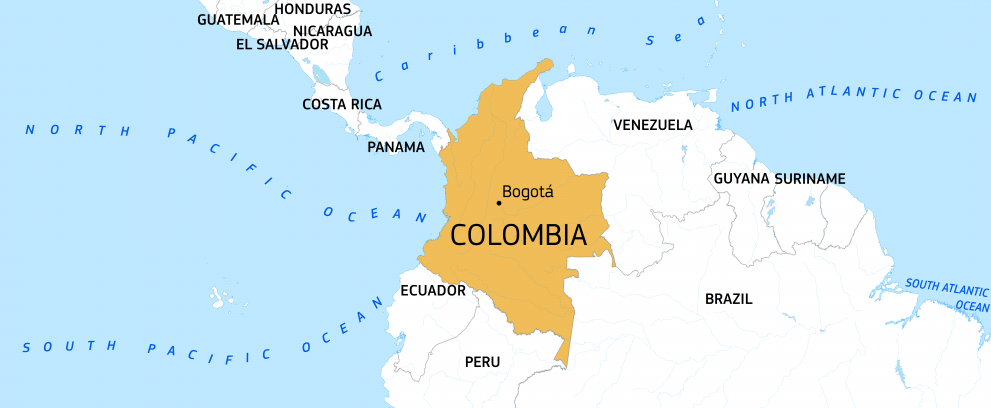Introduction
Despite significant development gains in Colombia over the past decade, including the 2016 Peace Agreement with the country’s largest guerrilla group (the FARC), humanitarian needs are still rising.
The context of Colombia is complex and the multilayered humanitarian situation remains acute due to:
- the territorial expansion of armed non-state actors,
- the increased impact of disasters related to climate change,
- growing socio-economic vulnerabilities exacerbated by COVID-19,
- and the integration needs of more than 2.9 million Venezuelan refugees and migrants.
What are the needs?
The humanitarian impact continues to exceed the response capacity of government entities and humanitarian partners in Colombia. As a result, an estimated 8.3 million people are expected to have humanitarian needs in 2024 and will require complementary assistance from humanitarian actors, according to the Humanitarian Needs Overview (HNO).
The UN Office for the Coordination of Humanitarian Affairs (OCHA) reported that at least 250,000 people suffered from the humanitarian consequences of the conflict in 2023. This includes forced displacement, confinements, threats, homicides, landmine explosions, and forced recruitment.
Despite the Total Peace policy, the lack of respect for International Humanitarian Law (IHL) has rendered the civilian population even more vulnerable, particularly in the Amazon and Pacific regions, and border areas of the country. Afro-Colombian and indigenous communities are disproportionately affected.
The most vulnerable people require protection, food assistance, health care, education, and safe water. Besides basic needs, the situation of refugees and internally displaced people also requires protection, psychosocial and legal assistance, and the development of durable solutions.
Over 7.7 million Venezuelans have fled their country since 2015, among them more than 2.9 million live in Colombia. The 2024 Regional Refugee and Migrant Response Plan (RMRP) projects staggering figures such as up to 4.71 million people in need of assistance in Colombia, including migrants, refugees, and host communities.
Moreover, Colombia faces additional challenges. The COVID-19 pandemic (that registered more than 6 million cases and over 140,000 deaths as of June 2022) also severely impacted the socio-economic structure of the country. According to Government data, 3.5 million people fell into poverty, bringing the total number of persons in a situation of poverty to 21 million (42.5% of the population).
Volcanic eruptions, landslides, floods, and droughts represent another threat to people’s lives and livelihoods.
In 2023, 4,595 emergencies linked to natural and climate-related events were recorded, affecting over 399,000 people.
Moreover, the transition from the La Niña phenomenon to El Niño posed a risk to 9.3 million people across half of the country’s municipalities, (HRP 2024).

How are we helping?
Colombia is one of Latin America's largest recipients of EU humanitarian aid with more than €441 million since 1994. In 2024, the EU has allocated over €30 million in humanitarian assistance.
The EU aid helps provide essential services such as health, protection, education, water and sanitation, and other services to vulnerable groups facing structural barriers to access.
While assistance to populations affected by violence and armed conflict has been prioritized since 1994, the evolving context of multiple risks has prompted the EU’s humanitarian aid to swiftly adapt to address the most urgent needs of vulnerable communities. For instance, between 2020 and 2021, the EU provided humanitarian assistance to curb the spread of COVID-19 in Colombia.
Furthermore, from 2018 to date, the EU in Colombia has allocated resources to provide humanitarian services to the migrant population passing through Colombia on their way to other countries in the continent. This includes those who have left their countries of origin and crossed the dangerous Darien Gap.
The European Union and the Latin America and Caribbean region established a Memorandum of Understanding on disaster risk management (version in Spanish) as a new collaboration instrument. This agreement focuses on disaster preparedness and risk management, and it became effective in May 2024. Regional disaster management agencies, including the Andean Committee for Disaster Prevention (CAPRADE), have signed as parties to the agreement.
Last updated: 03/12/2024
Facts & figures
8.3 million people in Colombia need humanitarian assistance (HRP 2024)
8.2 million internally displaced people since the start of the Colombian conflict (UARIV, 2022)
Between 2022 and 2023, 134,200 Colombians applied for asylum worldwide
Colombia ranks as the third country in the region with the highest number of new asylum seekers, following Venezuela and Cuba (UNHCR, 2023)
Over 2.9 million refugees and migrants from Venezuela (RMRP 2024)
EU humanitarian funding:
€30 million in 2024
€441 million since 1994

